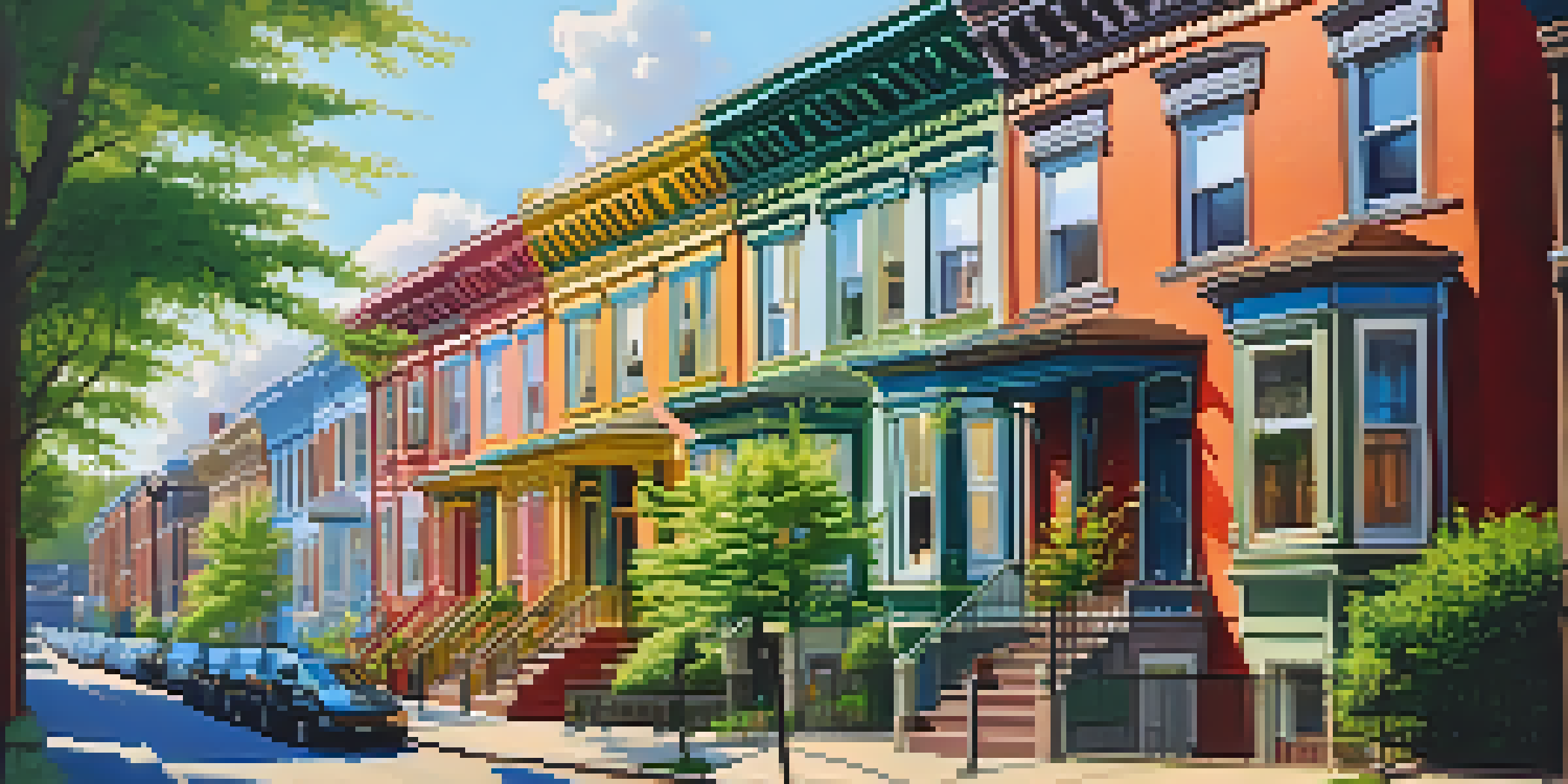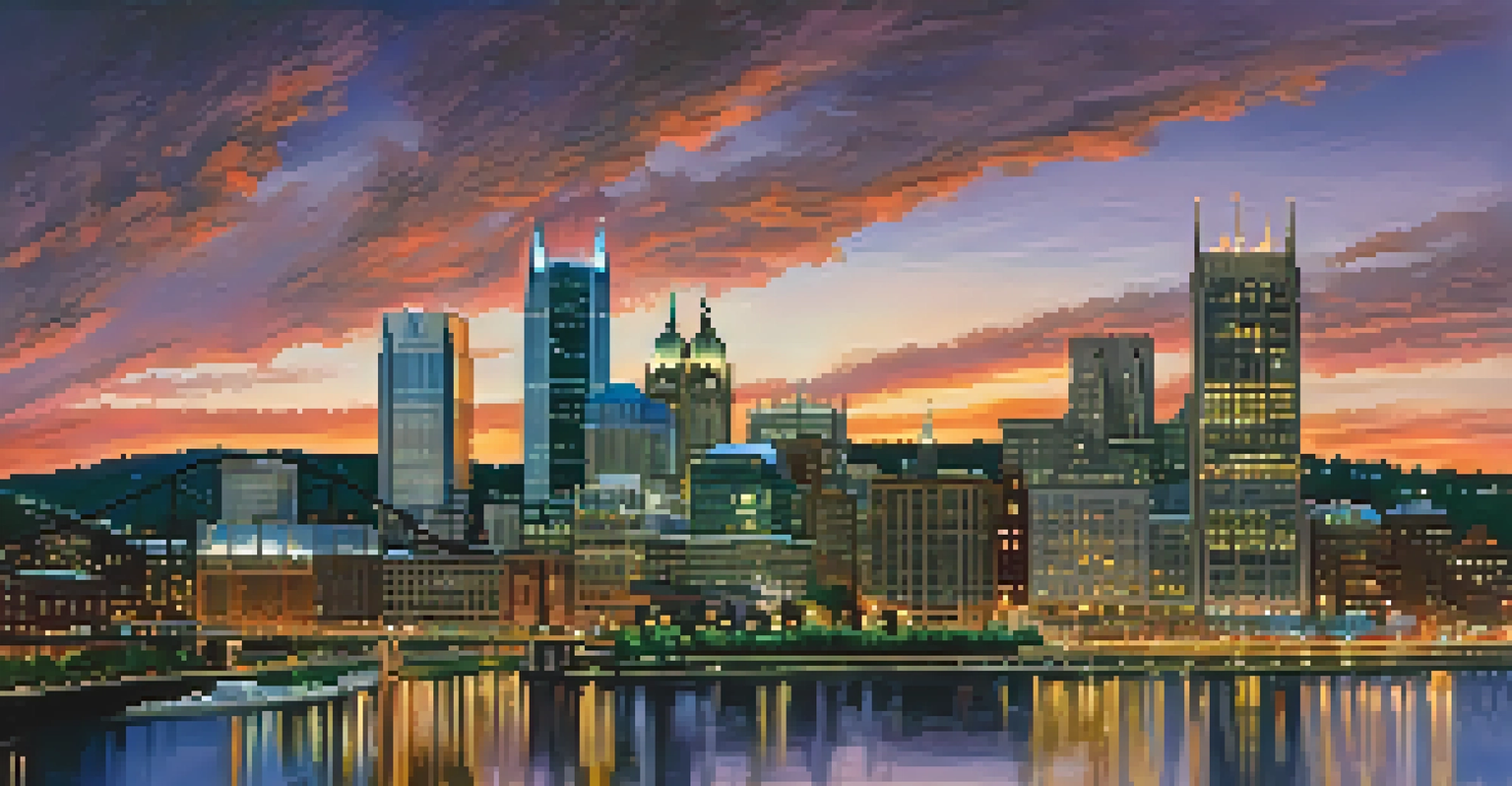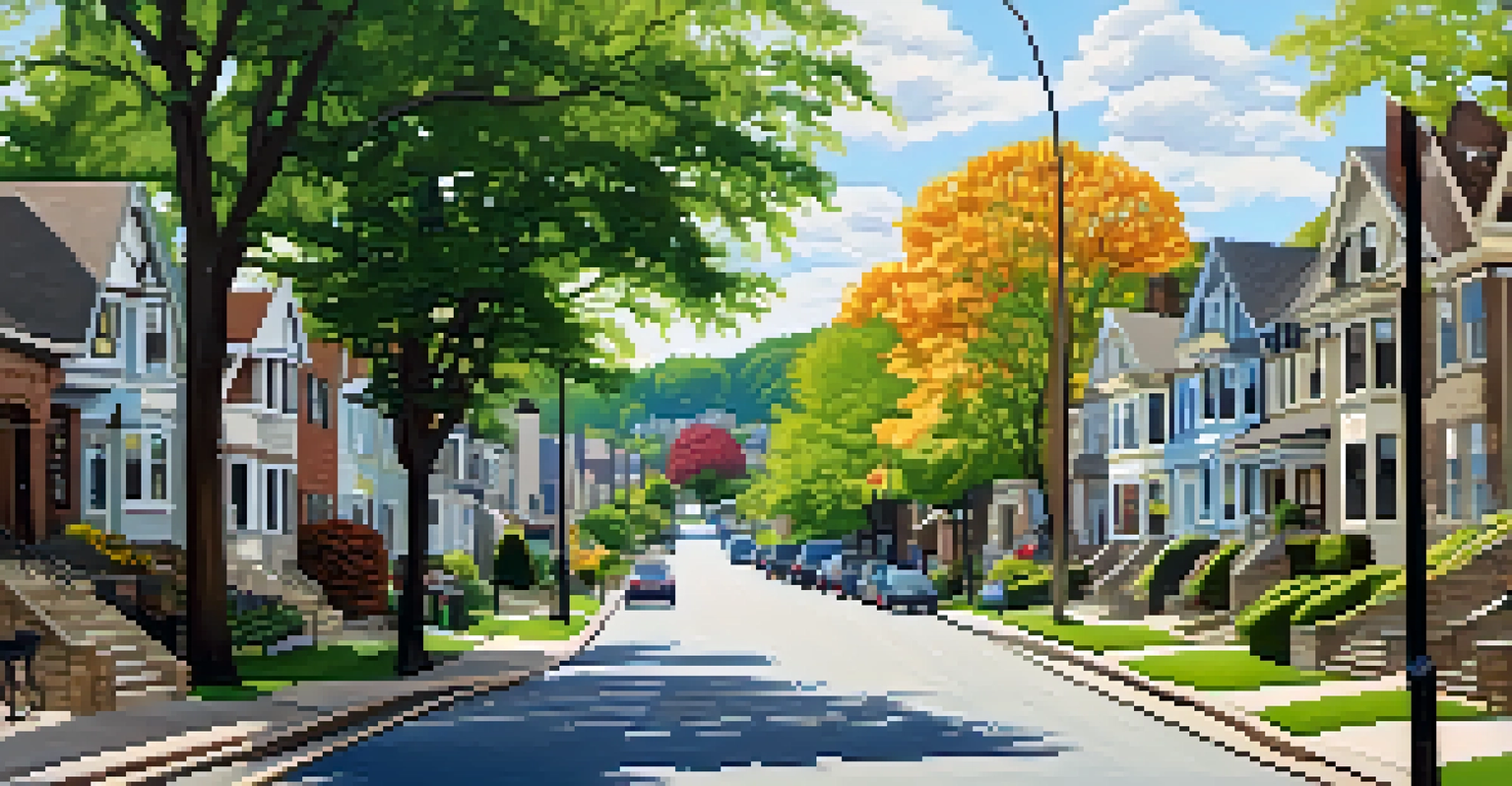Pittsburgh's Neighborhoods: A Study of Architectural Diversity

Introduction to Pittsburgh's Architectural Landscape
Pittsburgh, often known for its steel industry, boasts a surprisingly rich architectural tapestry. Each neighborhood tells its own story through unique building styles that reflect the city's diverse history and culture. From Victorian mansions to modern skyscrapers, the architecture of Pittsburgh is as varied as its residents, making it a fascinating study for both locals and visitors alike.
Architecture is a visual art, and the buildings speak for themselves.
As you wander through the city, you'll notice that each area has its own distinct character, which is shaped by historical events, economic shifts, and the people who call these neighborhoods home. The architectural diversity not only enhances the visual appeal of Pittsburgh but also serves as a backdrop for the community's evolving identity. This article takes you on a journey through some of the most notable neighborhoods, highlighting their unique architectural features.
Whether you're an architecture enthusiast or a casual observer, understanding the variety of styles present in Pittsburgh can deepen your appreciation for the city's rich heritage. Let's explore how these neighborhoods exemplify the cultural mosaic that is Pittsburgh.
The Historic Charm of Lawrenceville
Lawrenceville is a neighborhood that perfectly encapsulates Pittsburgh's blend of history and modernity. With its charming row houses and well-preserved Victorian buildings, this area offers a glimpse into the past while embracing contemporary design. The streets are lined with a mix of colorful facades, showcasing the craftsmanship of the late 19th and early 20th centuries.

One standout feature of Lawrenceville is its emphasis on local art and innovation, which has transformed some historic buildings into vibrant spaces for galleries, shops, and eateries. This juxtaposition of old and new creates an inviting atmosphere that draws both residents and visitors to explore. Walking through Lawrenceville feels like stepping into a gallery of architectural styles that coexist harmoniously.
Pittsburgh's Architectural Diversity
The city's neighborhoods showcase a rich variety of architectural styles that reflect its diverse history and culture.
As you stroll the avenues, don’t miss the chance to admire the intricate details of the buildings, from ornate cornices to vibrant murals. Lawrenceville not only highlights the architectural diversity of Pittsburgh but also serves as a testament to the city's ability to adapt and thrive while honoring its roots.
Squirrel Hill: A Melting Pot of Styles
Squirrel Hill is often celebrated for its vibrant community and eclectic mix of architectural styles. Here, you'll find everything from traditional brick homes to striking modern designs, reflecting the neighborhood's inclusive nature and diverse population. The eclecticism of Squirrel Hill is a perfect representation of Pittsburgh's overall architectural diversity.
The details are not the details. They make the design.
The area is also known for its tree-lined streets and parks, which add to the charm of its residential buildings. As you walk through, you might encounter Tudor-style homes with steeply pitched roofs alongside sleek, contemporary structures. This blend of styles not only enhances the visual appeal but also showcases the neighborhood's evolution over time.
Squirrel Hill's architecture tells a story of growth and adaptation, as the neighborhood has welcomed various cultural influences. This diversity is further reflected in the local businesses and community spaces, making Squirrel Hill a vibrant hub of activity and creativity.
Downtown Pittsburgh: The Hub of Modern Architecture
As the heart of the city, Downtown Pittsburgh is a showcase for modern architecture, featuring an impressive skyline that highlights the evolution of design. Towering skyscrapers and sleek glass buildings stand as symbols of the city’s economic resurgence and forward-thinking approach. This area contrasts sharply with the historic neighborhoods surrounding it, creating a dynamic urban landscape.
One notable building is the PPG Place, which is recognized for its stunning glass façade and unique design reminiscent of a Gothic cathedral. Such structures not only redefine the skyline but also contribute to Pittsburgh's reputation as a center for architectural innovation. The blend of historic landmarks with modern developments creates a conversation between the past and the present.
Historic and Modern Coexist
Pittsburgh blends historic charm with modern design, allowing neighborhoods like Lawrenceville and Downtown to thrive together.
Downtown is a testament to how architecture can reflect a city's growth and aspirations. As you explore, you'll find that each building has its own story, contributing to the vibrant narrative of Pittsburgh's architectural journey.
The Quaint Beauty of Shadyside
Shadyside is known for its picturesque streets and elegant homes, making it a standout neighborhood in Pittsburgh. Here, Victorian and Georgian-style houses create a charming atmosphere that feels both timeless and inviting. The well-maintained gardens and tree-lined sidewalks enhance the neighborhood’s appeal, inviting residents to enjoy leisurely strolls.
What makes Shadyside particularly interesting is how its architecture reflects the community's affluence and commitment to preserving its heritage. Many homes feature intricate details, such as stained glass windows and wrought-iron balconies, highlighting the craftsmanship of earlier eras. This dedication to maintaining architectural integrity is a point of pride for the residents.
In addition to its residential charm, Shadyside also offers a mix of boutique shops and cafes nestled within historic buildings. This combination of quaint beauty and vibrant community life showcases how architecture can foster a sense of belonging while enriching the neighborhood's character.
North Side: A Blend of History and Art
The North Side of Pittsburgh is a treasure trove of architectural gems, with a rich history that is reflected in its diverse building styles. From the grandeur of the Allegheny County Courthouse to the innovative designs of the modern North Side community spaces, this area embodies the city's historical depth while embracing artistic expression. The contrast between historic structures and contemporary art installations creates a vibrant cultural landscape.
One of the highlights of the North Side is the historic Mexican War Streets, where Victorian houses with colorful facades line the streets. This neighborhood has become a canvas for artists, with murals and installations that breathe new life into the area. The blend of art and architecture creates an inviting atmosphere that celebrates creativity and community.
Community and Identity Through Architecture
The architectural landscape of Pittsburgh fosters a sense of community and belonging, highlighting the stories and evolution of its residents.
As you explore the North Side, you'll find that each street tells a story of Pittsburgh’s past while looking towards the future. This unique combination of history and art makes the North Side an essential stop for anyone interested in the architectural diversity that defines the city.
The Revival of the Strip District
The Strip District has undergone a remarkable transformation, evolving from a historic market area into a bustling hub of commerce and culture. Its architectural landscape reflects this change, showcasing a mix of old warehouses repurposed into trendy shops and restaurants. This revival has made the Strip a vibrant destination, attracting both locals and tourists alike.
As you wander through the Strip District, you'll encounter a fusion of industrial architecture with modern design elements. The exposed brick and steel structures tell the story of the area’s past, while new developments complement the existing buildings, creating a harmonious blend. This architectural diversity captures the essence of Pittsburgh’s adaptability and resilience.

The Strip District not only highlights the city’s rich history but also serves as a beacon of innovation. The vibrant atmosphere, combined with its unique architecture, makes it a must-visit area for anyone wanting to experience the dynamic spirit of Pittsburgh.
Conclusion: Celebrating Pittsburgh's Architectural Tapestry
Pittsburgh's neighborhoods offer a fascinating journey through time, showcasing an impressive array of architectural styles that reflect the city's diverse heritage. From the historic charm of Lawrenceville to the modern skyline of Downtown, each area contributes to the rich tapestry that makes Pittsburgh unique. This architectural diversity not only enhances the city’s aesthetic appeal but also fosters a sense of community and belonging.
As we’ve explored the various neighborhoods, it’s clear that architecture in Pittsburgh is more than just buildings; it’s a reflection of the people, their stories, and the evolution of the city itself. Each neighborhood stands as a testament to the city’s ability to embrace change while honoring its past. The blend of styles and influences creates a vibrant atmosphere that captivates anyone who experiences it.
In celebrating Pittsburgh's architectural diversity, we gain a deeper understanding of the city’s identity and the rich narratives woven into its fabric. So whether you're a lifelong resident or a first-time visitor, take a moment to appreciate the architectural beauty that surrounds you in Pittsburgh.